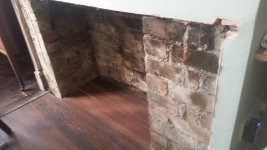Tim Brennan
Member
- Joined
- Jul 28, 2013
- Messages
- 145
I have some dusty exposed brick that I would like to clean without creating too much mess. See photos
One idea I had was to use my DTS400 and some crystal40 and ct to collect the dust.
Or else I could scrub will scourer and water but that seems less fun.
Any opinions welcome
One idea I had was to use my DTS400 and some crystal40 and ct to collect the dust.
Or else I could scrub will scourer and water but that seems less fun.
Any opinions welcome


